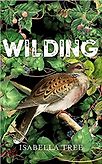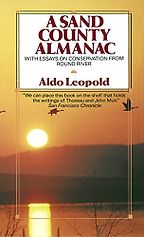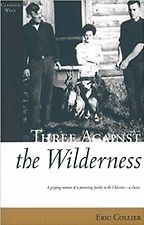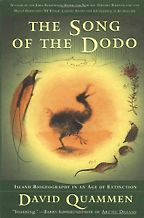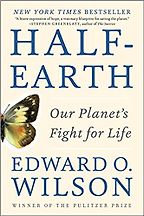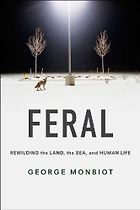What does ‘wilding’ mean to you?
I consciously didn’t call my book ‘Rewilding’ because that pesky little ‘re-‘ prefix suggests to many rewilding detractors an attempt to recapture the past – something we know, in this totally altered world of the Anthropocene, is impossible to do. All we can hope to do is stimulate something interesting for nature with the tools we have left to us, in the environment in which we now find ourselves.
So I think wilding – or ‘rewilding’ – is essentially about trying to recreate dynamism in a landscape, and you can do that to varying degrees, depending on where you are in the world, and how much land is involved. At Knepp, on 3,500 acres, in the densely populated south-east of England, we obviously can’t have apex predators like the wolf or lynx, or even bison (probably impossible with dog-walkers, as bison just don’t like dogs – they consider them to be wolves). But we can use free-roaming grazing animals like old English longhorn as a proxy for the aurochs, Exmoor ponies as a proxy for the tarpan and Tamworth pigs for wild boar. Together with red deer and fallow deer they drive the system here, creating vegetation complexity through their different grazing preferences and their natural disturbance of soil, and by moving seeds and nutrients around the landscape. So, in a sense, they’re the energy, the compulsion that stimulates dynamism on our depleted post-agricultural land again, that pulls the glider up into the air so it can fly. They create a mosaic of different habitats, that are ever-shifting, constantly changing – a system with lots of messy margins and transitional vegetation like emerging scrub. So there’s this constant battle between vegetation succession and animal disturbance – and this is rocket fuel for biodiversity.
The key is to sit back and let the animals do the work. So, controlling the natural processes as little as possible. Our main intervention is to keep the stocking densities of the free-roaming herds relatively low, enabling that interaction with the vegetation. So we cull the animals, and sell ‘wild range’ meat off the back of it.
“Wilding – or ‘rewilding’ – is essentially about trying to recreate dynamism in a landscape”
So compared with conventional conservation, we are very hands-off. We aren’t driven by targets, or particular rare species we want to favour or conserve. We just sit back and let things happen, and see what turns up. Which, in our case, has been simply astonishing – nightingales, turtle doves, purple emperor butterflies, peregrine falcons (nesting in a tree!) to name just a very few. It also avoids the burden of trying to lock nature into a position that continually favours certain species – which is hugely expensive in terms of man management, and rarely possible logistically on a large scale.
We need our conventional nature reserves. They are our Noah’s arks – places where some of our most endangered species and habitats are just clinging on to existence. But what rewilding can do, I think, is provide a means for creating natural, process-led areas like webbing, or ribbons, running throughout our landscape to join these Noah’s arks, these oases, together, so that wildlife can spill out into the wider countryside. And that is how we can create resilience for wildlife populations in the face of climate change and pollution.
In your book you describe how, at the start of the transition, the land, “released from its cycle of drudgery, seemed to breathe a sigh of relief.” Most conspicuous, you write, “was the noise: the low-level surround-sound thrum of insects — something we hadn’t even known we’d been missing. We walked knee-deep through oxeye daisies, bird’s-foot trefoil, ragged robin, knapweed…” The account goes on and it’s very lyrical. Wilding in England clearly requires a clear head and determination, but there is also emotion. What does wilding feel like?
I think it’s affected both my husband Charlie Burrell and I profoundly. Initially we just loved the feeling of life rebounding – the noise of birds and insects, barking foxes, roaring stags. There is a sense that the very ground beneath your feet is coming to life again with worm-cast, anthills, dung beetles, fruiting bodies of fungi, moles. You just feel like the land is heaving with life, and it’s rare to get that feeling in Britain. I think that’s why so many people liken Knepp to Africa. And then I think, more gradually, comes a deeper sense of the genius of nature. We’ve been doing it long enough, now, to have seen some dramatic cycles come and go – outbreaks of ragwort or creeping thistle, snowstorms of fluffy sallow seed in a mast year, wet winters and dry summers. And these can be hard to live with if you worry about trying to maintain control. But then you notice the knock-on effect on species that take advantage of these conditions: clouds of painted lady butterflies, outbreaks of sallow saplings, battalions of purple emperors.
“There is a sense that the very ground beneath your feet is coming to life again”
So there’s a greater appreciation for the boom and bust cycles of nature – which, in itself, is oddly comforting, and it’s deeply relaxing, this feeling of letting go. These things are meant to happen. That’s the way of it. And the more you can sit back and go with the flow, the more wonderful these performances become.
But then, of course, there’s the downside. We’ve got used to living with a richer kind of nature on our doorstep and now, when we go for walks elsewhere with friends, to places we always used to enjoy, what we notice most is the silence and the stillness. When we’re driving, or watching the landscape flash by from a train, we now know what isn’t there.
Wilding at Knepp would not have been possible without the support of taxpayers, through mechanisms such as the Countryside Stewardship Scheme and the Higher Level Stewardship Scheme. That said, official agencies also slowed you down or prevented you from doing some things you have wanted to do. What do you think will best facilitate wilding in future?
We were lucky to find – eventually – the right people at the right level, with the courage and decision-making authority, to back our project. But the process was often painful and drawn out. We spent months and months every year over eight long years, jumping through bureaucratic hoops with the Environment Agency in order to get the rewilding of our stretch of the River Adur under way – something that could and should have taken just a few weeks. So, from the outside, these unwieldy layerings of officialdom seem massively ineffectual and frustrating. Civil servants have to negotiate constant political changes, too – they don’t know who is going to be in office from one year to the next – and with no clear direction they become risk-averse and indecisive.
“Rewilding projects need long-term thinking and flexibility in approach”
Rewilding projects need long-term thinking and flexibility in approach. We’re discussing with government how to come up with long-term contracts that are tailor-made for individual projects because there is no ‘one size fits all’ for open-ended process-led rewilding. So much depends on size and local environmental, social and other factors.
Natural England, a non-departmental public body responsible for ensuring that England’s natural environment is protected and improved, won’t have the resources to negotiate individual contracts for lots of tiny areas – and rewilding, anyway, is about natural processes at landscape-scale – so this is about Knepp-size and upwards, involving farm-clusters and the like. So engaging with communities is hugely important.
We’re already seeing this in projects like Cairngorm Connect, where the RSPB, Scottish Natural Heritage, Forestry Commission Scotland, a large private landowner and local communities are working together to bring about huge areas of connected wild habitat in Scotland. Similar initiatives are afoot in Wales. So apart from government and regulators embracing a new, more flexible way of thinking, it’s important that those communities that are involved in rewilding communicate with others about their successes – and failures – and how to make it work.
Your first book choice is A Sand County Almanac by Aldo Leopold. What relevance do the observations of an American ecologist who died 70 years ago have today?
Aldo Leopold is known as the father of ‘rewilding’, although it wasn’t called that at the time. He was the first to acknowledge natural processes at landscape scale and, memorably, the first to understand the role of the apex predator. “The cowman who clears his range of wolves,” he wrote, “has not learned to think like a mountain. Hence we have dustbowls and rivers washing the future into the sea.” This was almost a century before wolves were reintroduced to Yellowstone National Park in the US, kickstarting processes that have ultimately proved to affect the course of rivers and — counterintuitively — increase biodiversity; a phenomenon now known as ‘apex predator trophic cascades’.
He also expressed the sadness and frustration that inevitably befalls one who ventures down the path of conservation: “One of the penalties of an ecological education is that one lives alone in a world of wounds.” To me, that rings painfully true. As an ecologist he was remarkably open-minded and un-egotistical. He genuinely felt that nature is the greatest teacher of all – and that’s a lesson, I feel, that we all do well to follow.
Leopold noted that the farms neighbouring his own were considered ‘good’ in proportion to the poverty of their floras (and, implicitly, the productivity of just a few crops), and he chose his farm precisely because it lacked this type of ‘goodness’. This makes me think of Knepp! My impression, however, is that his arguments are not taken seriously by many people — or, rather, that they only get lip service. The assumption seems to be that rewilding may be a nice peripheral extra but that it mustn’t get in the way of the serious business of producing food.
The notion that we must work every inch of our land for food production has been ingrained in us since World War Two. But the unpublicized reality is that, thanks to the miracles of modern technology, the world is already producing enough to feed ten billion people – well over two billion more than are currently alive. The shocking corollary is that we waste a third of this food: 1.3 billion tonnes every year. So we are not teetering on the brink of starvation, as the food and farming industry would have us believe. However, modern intensive farming is creating real problems for the environment and we can’t go on along this trajectory forever. In 2014, the National Farmers’ Union announced we had only 100 harvests left in the UK before there’s no topsoil left in which to plant a crop. That’s because our soil structure is so degraded by repetitive ploughing that it simply blows away as dust in the wind or gets washed out to sea. So there’s a desperate need for soil restoration – and rewilding can provide that, cheaply and, it seems, remarkably quickly. It also mitigates against flooding, replenishes water resources, and purifies that water. And it creates habitat for pollinating insects. All essential things that will safeguard the future of farming.
“Rather than being cast as the enemy of farming, rewilding should be seen as its greatest ally”
A former advisor to Natural England came up with a really interesting idea after visiting us: pop-up Knepps. An area of degraded land could be rewilded for, say, 20, 30, 40 or 50 years – enough time to regenerate the soil and provide a period of emerging scrub habitat for birds and wildlife – and then be returned to agricultural production. The land to be rewilded would be strategically planned over a much larger area, creating stepping stones or corridors for nature. As one piece of land is taken out of rewilding and returned to sustainable agriculture, another in the vicinity embarks on rewilding; ensuring the same amount of land remains under rewilding to balance the amount of land under agriculture. Much like the rotational farming systems of old, only more extensive and on a much longer time-scale.
So, rather than being cast as the enemy of farming, rewilding should, I think, be seen as its greatest ally. The two can, and should, work together.
Your second choice is Eric Collier’s Three Against the Wilderness. First published in 1959, it is less well known than A Sand County Almanac. Why do you recommend it?
I love this book! Because it’s written by a homesteading pioneer, a fur trapper seeking his fortune, rather than a conservationist or an idealist, its pragmatic message about the workings of nature is all the more powerful and moving. The author, Eric Collier, a lawyer’s son from Northampton, set off for British Columbia in the 1930s and took on a fur-trapping concession on a remote area of the Chilcotin wilderness belonging to his part-Indian wife. The problem was, that the whole area had already been hunted out decades before. Even the trees were dying. In order to restore the region’s water resources and try and make a life for himself, his wife and his son, he resorted to rebuilding, by hand, the old beaver dams – and a miracle happened. Wildlife returned, including species that he was then able to trap sustainably. And what is more, farmers downstream, who were about to abandon the land because they were ruined by summer droughts and spring floods, decided to remain because suddenly their land had become farmable again. It’s an adventure story, first and foremost, and beautifully written, but also a paean to the creative impacts of a keystone species. And ultimately, the happiest ending of all – he is able to restore the beavers themselves and can sit back and let them do the work.
Do you see lessons in this for relatively small areas in Europe such as Knepp? After all, the North American beaver and the Eurasian beaver are different species, and England is a lot smaller than British Columbia, and has different topography, climate and vegetation.
The North American beaver is, indeed, a distinct species, with 40 chromosomes to the Eurasian’s 48. The two never interbreed, even in captivity. But nevertheless, in appearance, behaviour and environmental impact, the American beaver is virtually indistinguishable from its European cousin. They are astonishing hydrological engineers and in even a tiny area, they can create habitats that are rocket fuel for biodiversity. In an enclosed 7 acre site run by the Devon Wildlife Trust, a small family of beavers have totally transformed a 200m canalised stream into a braided system of channels, willow coppice and ponds with 1,000 square metres of open water, in just a few years. Aquatic invertebrates, beetles, bats, lizards, amphibians and flora have proliferated and endangered culm grassland is returning to this tiny area.
And, just as importantly, the beavers have been shown to have a dramatic impact on water purity, and on flow, evening out the release of water in times of drought and flood. This is a study site for Exeter University and the results are astonishing. We have to remember, we once had beavers by the million in the British Isles – our ecology evolved alongside beavers and benefitted from their presence. European reintroductions of beavers, where they’ve been brought back from the brink of extinction over the last 50 years or so, have proved incredibly successful and they are now widely regarded for the beneficial role they play in ecosystems – even by anglers, some of the beaver’s most ardent opponents in Britain. A surprising number of people, perhaps confusing them with otters, think that beavers eat fish. Even C S Lewis portrays Mr and Mrs Beaver in Narnia tucking into trout and potatoes. But their characteristic buck teeth would be useless in a fish fight. Rather than predate on fish, beavers actively encourage them. Their dams and lodges provide habitat for invertebrates and micro-organisms – food for fish – as well as protection for small fry against predation by larger fish, kingfishers and herons.
So, if the Bavarians – who have one of the most managed agricultural landscapes I can think of – can live with a population of 18,000 beavers, we should be able to work out a way of living with them here.
Tell us about your third choice, The Song of the Dodo by David Quammen
I don’t think anyone has described the fragmentation of nature in the modern world as brilliantly as Quammen. He likens an ecosystem to a Persian carpet. Cut a beautiful, complex carpet into tiny squares, he says, and you get not tiny carpets, but a lot of useless scraps of material fraying at the edges. That’s what we’ve done to our ecosystems. For the most part, nature now exists only in tiny pockets, oases in a biological desert, fraying at the edges. Species that exist in these little Noah’s arks are increasingly vulnerable to assault by pollution, climate change and predators. Populations that – unlike birds or flying insects – are unable to move and mingle with other populations suffer from genetic impoverishment. This is what happens on small islands in mid-ocean. Islands are where species most commonly go extinct. Quammen’s wondrous peregrination of islands takes us on a journey of evolutions and extinctions in order to illustrate how like islands our continents have become.
You had already been wilding for more than a decade when your next choice, George Monbiot’s Feral, was published in 2013. What does his book add?
Feral was – is – a landmark book. It attuned to a craving that people were feeling, I think, but hadn’t yet voiced: the idea that we’re missing something – wilder, deeper nature; that our landscapes have become pedestrian and soulless, unfulfilling. The response to George’s book was astonishing and it is still selling strongly four years on. He’s particularly good on ‘shifting baseline syndrome’ – the continuous lowering of standards and acceptance of degraded natural ecosystems from one generation to the next. Our great-grandparents, even our grandparents, would be astonished and saddened at what we now consider normal in terms of countryside and wildlife.
But I think he also pushed the boundaries of what rewilding should mean. He opened up the whole debate about the possibility – the desirability – of introducing apex predators like the lynx, bear and wolf back into Britain. Until Feral this subject was taboo, too much for the British to even consider. The likelihood of wolves freely roaming the Scottish Highlands any time soon is, I think, remote – but who is to say that our grandchildren or great-grandchildren, having restored and expanded our wild places, might not be in a position to make that decision?
What Feral has done, though, by pushing the envelope – apart from get people talking heatedly about apex predators – is to make other introductions more possible. Next to a wolf, a beaver looks perfectly doable. In fact, the beaver is probably now here to stay. And there’s a real possibility for wild cat and lynx reintroductions over the next few decades. Who would have thought that, even 20 years ago! So, Feral has, I think, done something really important towards reversing the direction of shifting baseline syndrome.
Your final choice is E O Wilson’s Half Earth.
I simply love the title of this book. It proposes that the situation facing our planet in environmental terms is so dire it can only be solved by dedicating half the earth’s surface to nature. It’s bold, it’s prescient and it hammers the message home: the biosphere does not belong to us, and if we ignore it, we will eventually, inevitably, become the perpetrators of our own extinction. I particularly appreciate his rebuttal of the ‘anthropocenists’ – those who believe we can solve our ecological crisis by high technology alone, that we can invent our way out of this mess. Wilson is a giant amongst biologists and understands biodiversity – and our impact upon it – like no other. So his words carry great traction. He is also a wonderful writer and one of those rare scientists who can communicate his inestimable knowledge with clarity and humility to the rest of us. I hope, more than anything, that the idea of ‘half earth’ is with us to stay.
What is your vision for the future?
Within the next 25 years – the time-frame for the government’s 2018 Environment Plan – rewilding will have reconnected large swathes of the British countryside. The wildlife in our nature reserves will be spilling out into the wider landscape. In fact, we’ll be beginning to realise we may no longer need these expensive, intensively maintained oases, these Noah’s arks. We will have sewn Quammen’s carpet back together. The rewilded land will cross a multitude of spectrums. So the building blocks for a wilder Britain will be in place and enthusiasm for it will have been secured because within a very short space of time people will have seen the successes for themselves, both in terms of wildlife and ‘ecosystem services’ like soil restoration, air purification and flood mitigation. We won’t have ignored the call for a north-south connection, and corridors and stepping stones will be providing wildlife with the means to return to even our most denuded farmed landscapes.
Get the weekly Five Books newsletter
Beavers will be here to stay, with a management programme in place allowing people to feel confident that they can live with this keystone species once again. Other charismatic species, like white storks, sea eagles and eagle owls will be flying over us once again. The burbot will be swimming in our rivers after an absence of centuries. We might even have lynx in our most forested areas, keeping the roe deer in check, and viable populations of wild cat. And as the hockey-stick graph of species and biomass continues on its rising trajectory, we’ll be feeling the tangible effects of life renewed. A walk or a run in the countryside, even in areas closest to our cities, will be rich with wild encounters. Nature conservation will have risen to the top of the political agenda thanks to a deeper understanding of how our health, our prosperity, agriculture, our very survival into the future, depend upon it. And we will be looking with renewed confidence and vigour to an even wilder future.
Five Books aims to keep its book recommendations and interviews up to date. If you are the interviewee and would like to update your choice of books (or even just what you say about them) please email us at [email protected]
Five Books interviews are expensive to produce. If you've enjoyed this interview, please support us by donating a small amount.

